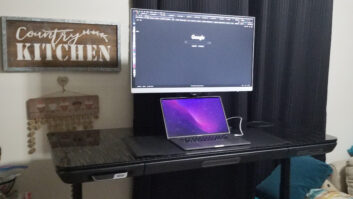NEW YORK — 3D printing is more mainstream than many people believe, but it still has a way to go before it becomes more than a hobbyist device, said a panel of 3D printer manufacturers during CE Week in late June.
While 3D printers are available from several retailers and direct from the manufacturer, most are still somewhat complicated to operate and are still mainly used by enthusiasts. This will change over time as the software and printers become simpler to operate, and the overall draw that 3D printing offers consumers should help spur this movement, the panelist agreed.
“I feel 3D printing is empowering. A person can make something that is personalized and unique,” said Keith Ozar, marketing director of Cubify 3D Systems.
Cubify now sells its Cube printer through Staples for $1,299.
Sam Cervantes, founder of Solidoodle, which sells printers direct to consumers with a starting price of $499, said an additional positive aspect is sustainability. Home 3D printing eliminates thousands of miles that raw materials and products have to be shipped, and even one of the basic materials used in 3D printing can be made from plants: polylactic acid (PLA) is made from a mix of corn starch, sugar cane and other plant life.
“People can grow the raw material in their backyard,” Cervantes said.
Although the panelists pointed out the reasons 3D should gain in popularity, they all agreed mass acceptance is not around the corner.
The primary issue is complication. Even though some consumer models are more or less plug-and-play, a person does have to learn how to use the software to operate the printer, which in turn limits its utility.
Ozar compared today’s 3D printers to a sewing machine.
“Usually only one person in a house knows how to use it,” he said, adding that this is the situation now with 3D printers.
Ozar and Cervantes pointed out that the printers are quickly becoming more user friendly, saying that the models available just two years ago were much more complicated. Another helpful element will be having more software designers expanding the number of objects that can be built. Ozar also hopes end users will take the time to fully understand the construction software that is now available so they can design their own items.
Peter Weijmarshausen, CEO of Shapeways, which uses 3D printers instead of machinery for manufacturing, said another huge plus would be if manufacturers would upload the 3D dimensions of their products onto the Internet so companies like Shapeways — and eventually home users — can create replacement parts for household items.













